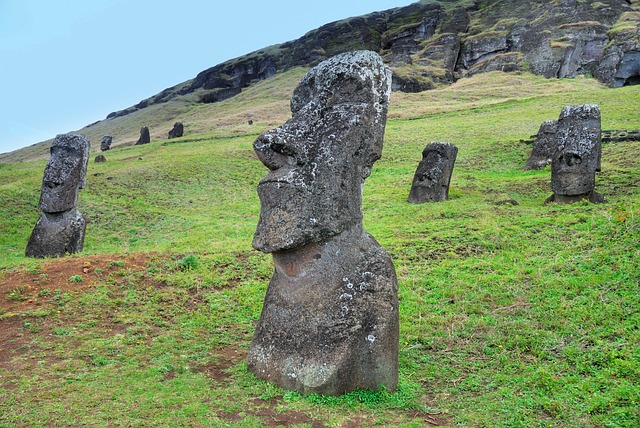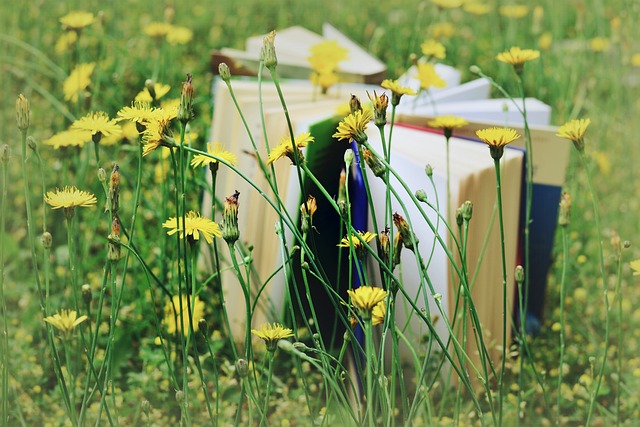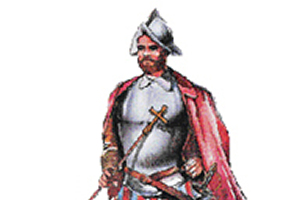Physical characteristics
Easter island’s geographical relief is volcanic in origin and consists of gradual elevations and sheer cliffs that drop straight down to the ocean in some places. There are three major inactive volcanoes on the island, Maunga Terevaka (511 masl), Poike (370 masl) and Rano Kau (324 masl). If you connect all three with an imaginary line, they form a right triangle. Maunga Terevaka is found on the northern vertex, which is also the highest point on the island. Poike is located southeast and the Rano Kau crater –which has a lagoon inside- is situated on the southwest part of the island.
In addition, 70 minor craters are spread out throughout the island. Some of the most important ones are Rano Raraku and Rano Aroi.
The coast is rugged and rocky. There are also a series of surrounding islets. Motu Nui, Motu Iti and Motu Kao are located southeast; Motu Tautara islet is located close to the western shore and Motu Marotiri can be found to the west.
The only two spots along the shoreline that don’t present this type of relief are in front of Hanga Roa and Ana Kena, where you can find the beaches that share the same names as well as O’vahe beach.
This island has no permanent waterways. Only some ravines have sporadic trickles of water, depending on the amount of precipitation that has fallen during the year.
There are three important lakes in the craters of the large volcanoes. However, Rapa Nui can survive thanks to the ready availability of underground waters.
Climate
Easter island is the only part of Chile that has a mostly rainy tropical climate. Its thermal regime displays a completely oceanic influence, in other words, a minimal temperature oscillation during the day. Precipitation falls regularly all year.
This rain is convective in origin, especially during summer, because in winter the presence of some low pressure systems causes frontal rain (marine waters are much warmer than mainland waters, resulting in significant atmospheric instability).
The average annual temperature on Rapa Nui is 21.8 ºC. The maximum high is 24.6 ºC in January and the lowest temperature is 19.2 ºC in August. These conditions are typical for rainy tropical climate, where winters and summers are warm.
Cultural traditions
Since its early days, the people of Rapa Nui have performed rites and ceremonies. A few of the most important one are:
– The Birdman Ceremony: for nearly 200 years, the representatives of the different lineages used to compete in O’rongo in order to get the first seagull egg, which was placed in the Motu Nui islet. The first to take the precious egg and transport it safely to the other side, was considered and received the title of Tangata Manu (Birdman). For a year, Tangata Manu and his tribe would receive economical, political and religious privileges.
– Aringa ora or Koro: it is held to commemorate the winter solstice and it means the living face of the patriarch. This ceremony celebrates the annual cycle of life, which is related to fertility and productivity. It also symbolizes a new sowing season, for both land and sea. In addition, tributes are paid to the family patriarchs along with their relatives in the community. The celebration consists of a large Easter islander curanto or Umu Ta’o, a meal made out of chicken, fish, lobster, bananas and sweet potatoes.
– Tapati: nowadays, this is perhaps the most important cultural display of Rapa Nui because it keeps alive ancestral traditions through songs, dances and other ancient customs. It lasts for two weeks in February and all of the island’s families participate in clans, each with their own candidate for queen. Each group of families must perform a series of tests to earn points for their candidate, who is crowned during the first full moon of the month. A few of the many tests that are held include the Riu (telling epics tales and legends), Haka Pei (young men go down a hill riding banana tree trunks at great speed) and Takona (a body paint contest), among others.
– Cycle of life: for example, at the age of eight, locals get tattoos on their legs. At puberty, they hold important ceremonies that symbolize the beginning of adult life. Adolescents, who had to spend months away from their family, were taken to Motu Nui island, where their bodies were painted in red and white. There, they learned a trade, war techniques, gained religious awareness and learned games, among other things. When an important member of the family died, they covered their body in a plant fiber and left it outdoors next to an ahu (ceremonial altar) for two years. Then, the bones were removed and left within a chamber built in the ceremonial altar. Their relatives remembered the deceased with a ceremony called Paina, which was performed in front of the ahu. They set up a large figure made of sticks and plant fibers and put a head on top.








